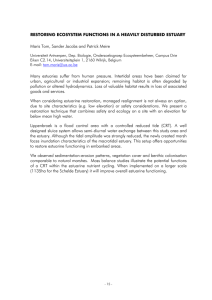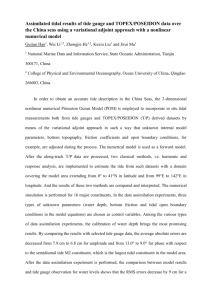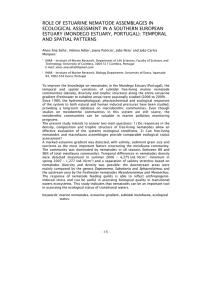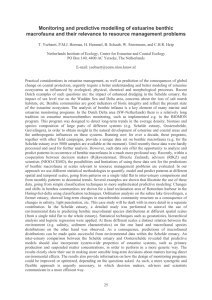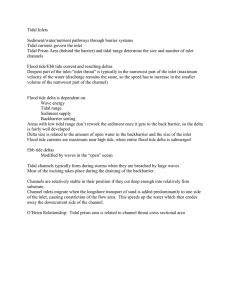M.', P.M.J. T. M.
advertisement
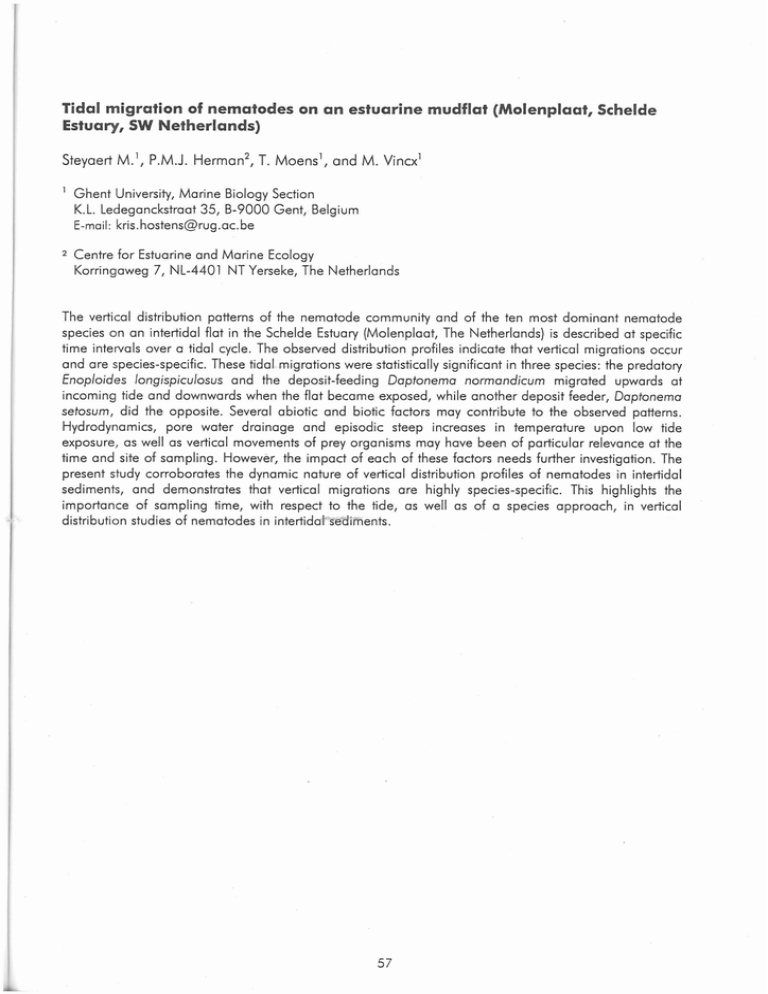
Tidal migration of nematodes on an estuarine mudflat (Molenplaat, Schelde Estuary, SW Netherlands) Steyaert M.', P.M.J. Herman2, T. Moensl, and M. Vincxl Ghent University, Marine Biology Section K.L. Ledeganckstraat 35, B-9000 Gent, Belgium E-mail: kris. hostens@rug.ac.be 2 Centre for Estuarine and Marine Ecology Korringaweg 7, NL-4401 NT Yerseke, The Netherlands The vertical distribution patterns of the nematode community and of the ten most dominant nematode species on an intertidal flat in the Schelde Estuary (Molenplaat, The Netherlands) is described at specific time intervals over a tidal cycle. The observed distribution profiles indicate that vertical migrations occur and are species-specific. These tidal migrations were statistically significant in three species: the predatory Enoploides longispiculosus and the deposit-feeding Daptonema normandicum migrated upwards at incoming tide and downwards when the flat became exposed, while another deposit feeder, Daptonema setosum, did the opposite. Several abiotic and biotic factors may contribute to the observed patterns. Hydrodynamics, pore water drainage and episodic steep increases in temperature upon low tide exposure, as well as vertical movements of prey organisms may have been of particular relevance at the time and site of sampling. However, the impact of each of these factors needs further investigation. The present study corroborates the dynamic nature of vertical distribution profiles of nematodes in intertidal sediments, and demonstrates that vertical migrations are highly species-specific. This highlights the importance of sampling time, with respect to the tide, as well as of a species approach, in vertical distribution studies of nematodes in intertidat getfihents.
